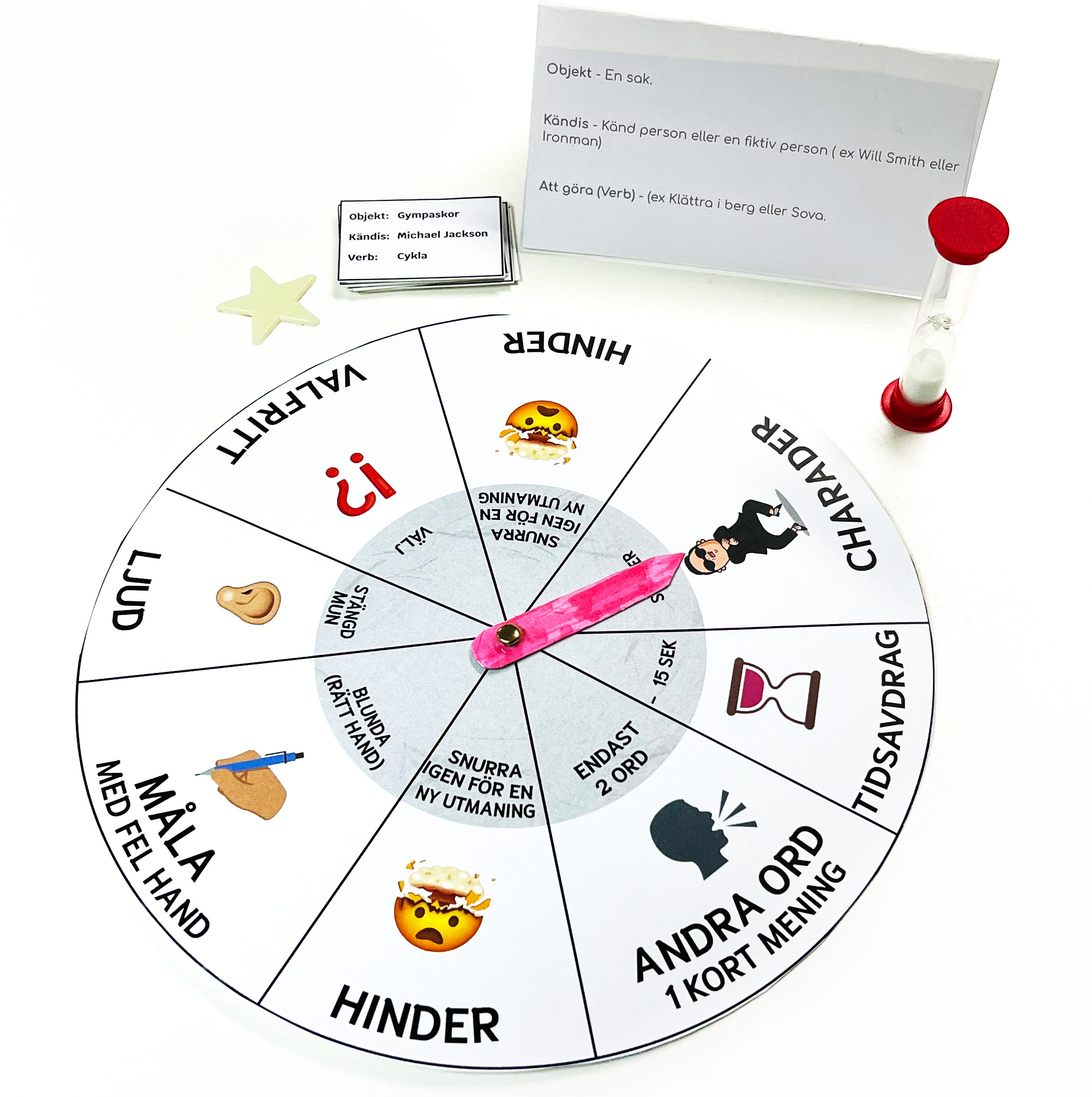Design board game
A school assignment from the course Designmethodlogy
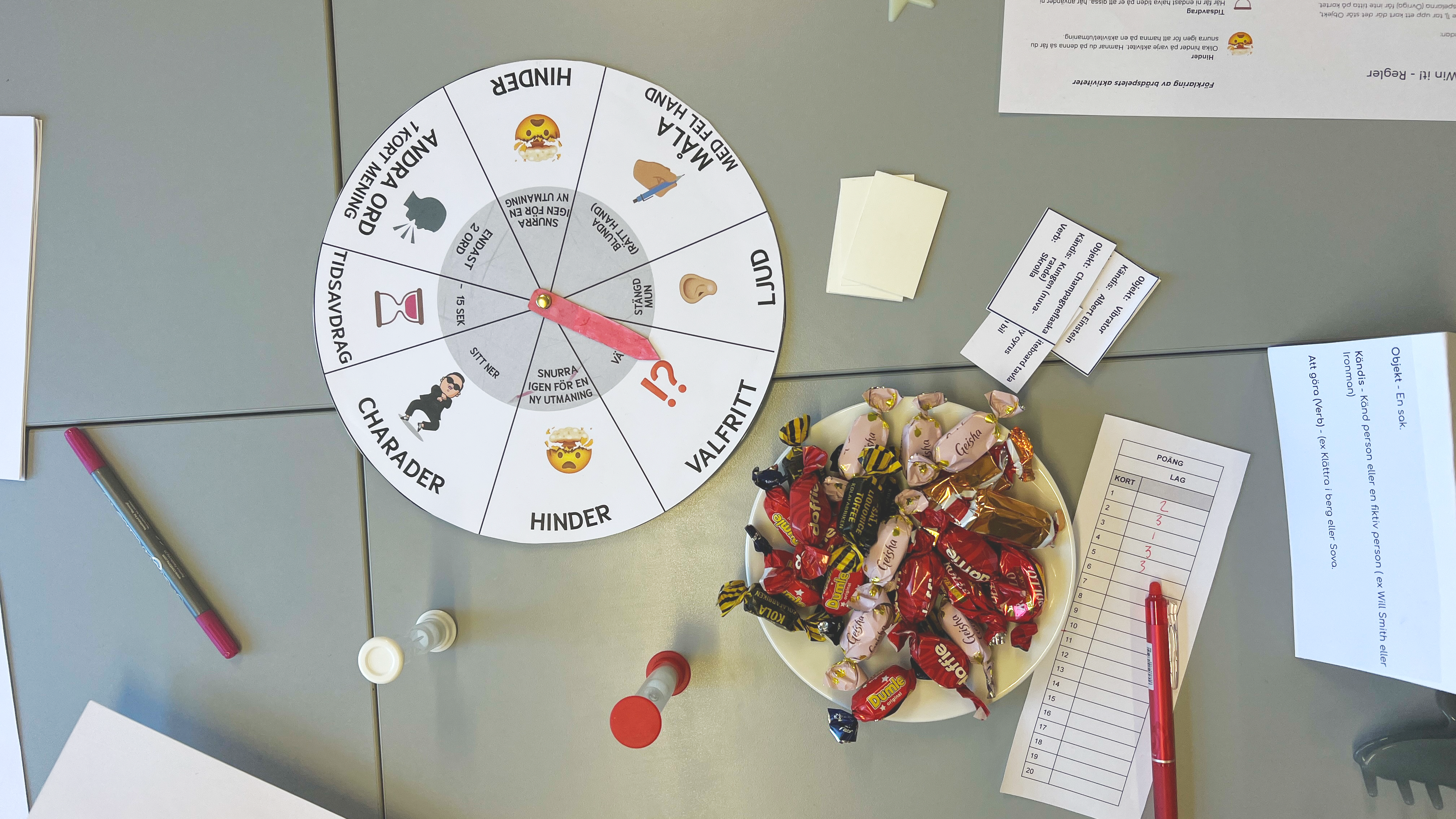
Course – Design Methodology
The course gains a good understanding of how a design process is structured. It includes training in various methods for data collection and analysis, as well as idea generation and selection. Prototyping and testing are introduced.
The purpose of this project was for us to try out how this type of design process works. The reason for designing a board game instead of a digital system, product, or service is that game design, more than many other forms of design, focuses on creating an experience, and the experience is the function of the game.
Assignment
We were given the task to create a board game that encourages collaboration. Through various methods, we chose humor as the gaming experience.
Our criteria goal was that the game should be designed for 2-5 players. It should take 10 – 30 minutes to play. It should not take more than 10 minutes to explain and demonstrate the rules.
And the goal is to create a board game that encourages collaboration with a focus on humor and to be light-hearted and to make people laugh.
- 4 UX Designer
- 2 Weeks
- Figma, Miro, Canva
Discover
Secondary research
We began the entire project with secondary research, where we gather a lot of inspiration for our own game. We continue by documenting our own experiences with board games, what we personally enjoy in games, as well as features and which games evoke different emotions in us.
Concept portrait & MDA
This then becomes the foundation for our concept portrait, which we use to perform a reverse MDA. We focus on the word collaboration in both steps, and then use the information obtained from our secondary research to determine our key concept
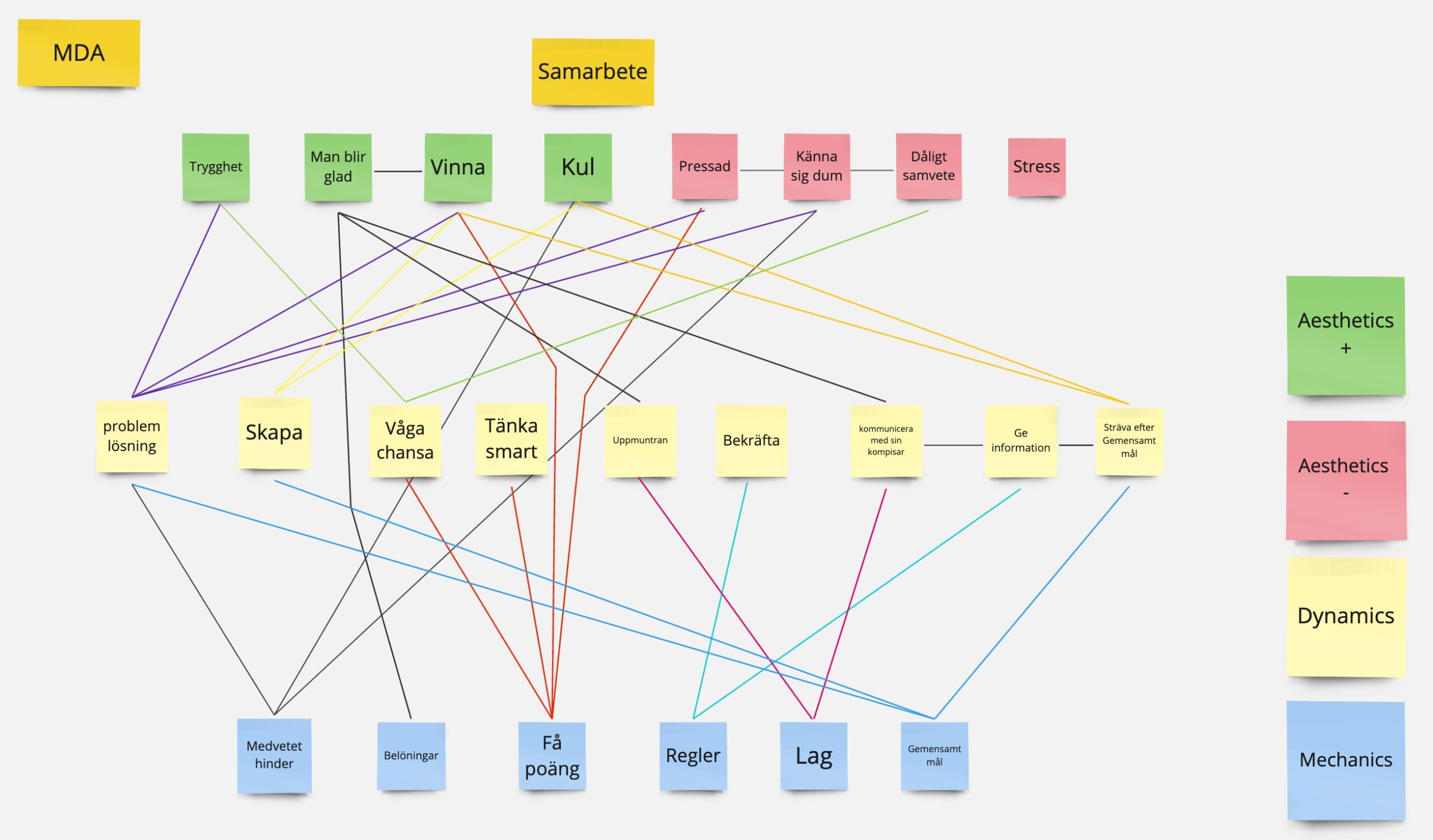
Define
Insights
When we had clustered together all the data we had derived from our trigger words, we selected three that we found important to include in our board game.
- Light – hearted
- Humorous
- Collaboration
The conclusion was that the user experience should be humorous.
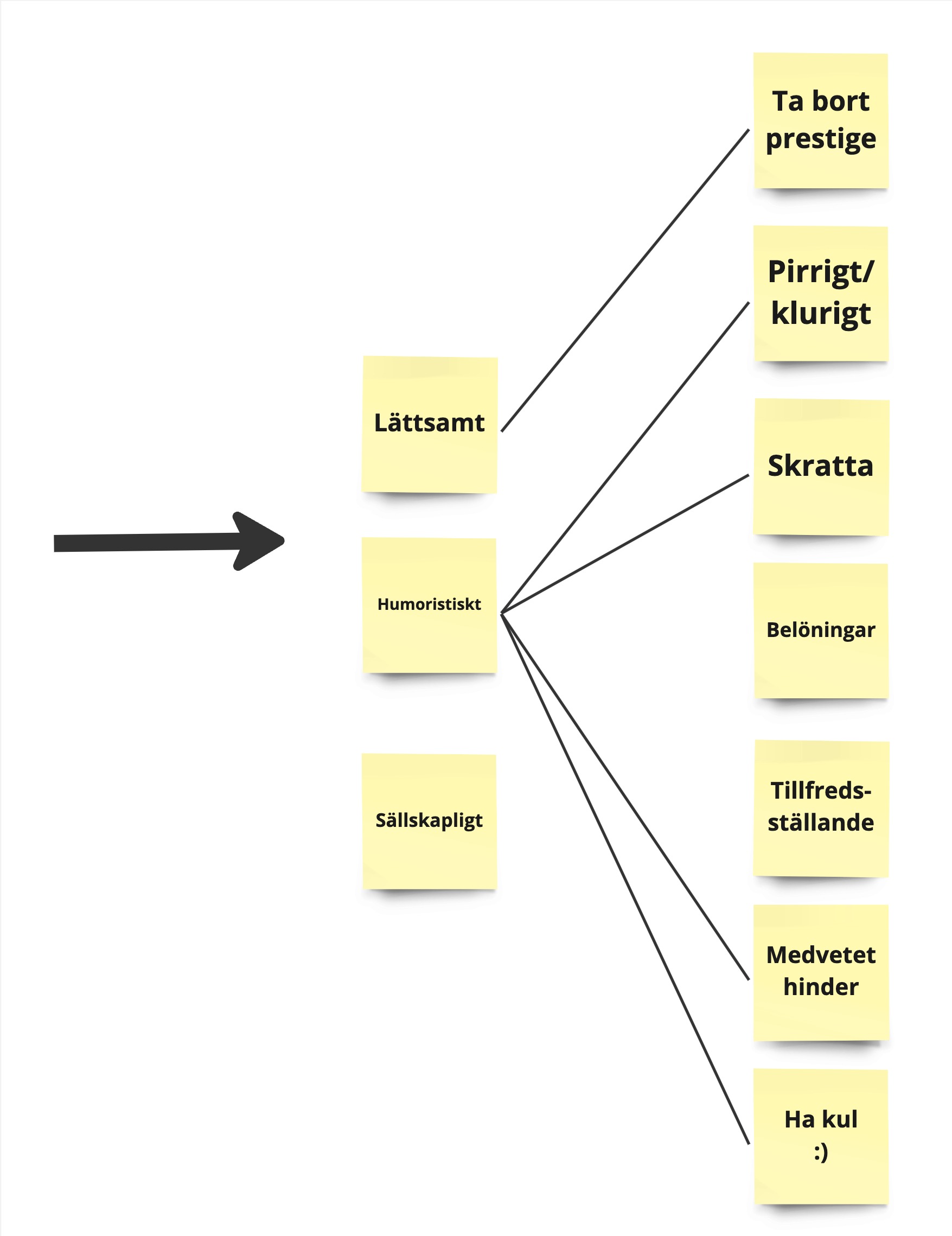
How might we” was put together with the help of our insights. And it became the following…
HMW…”How can we make a cooperative game humorous?”
Develop
Ideate
We discover early in the process that the whiteboard is a helpful tool for expressing our thoughts. It provides us with a clear overview, and we can easily reflect on what we like and don’t like. Sketchstorming is what got us started properly, allowing us to use our imagination and achieve a good flow. This led us to begin role-playing and come up with numerous game ideas.
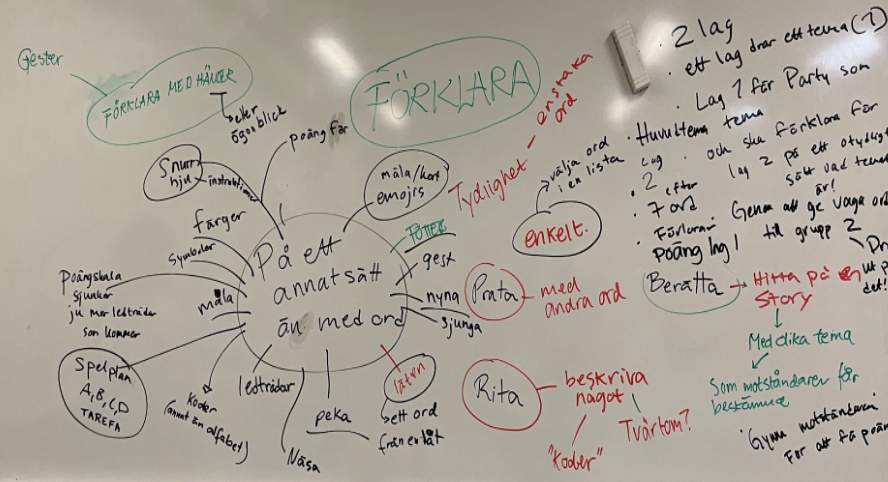
Dot voting
We summarize the five game concepts that we have generated from our brain/bodystorming sessions and conduct a dot voting on Miro. We had many good ideas, and it was challenging.
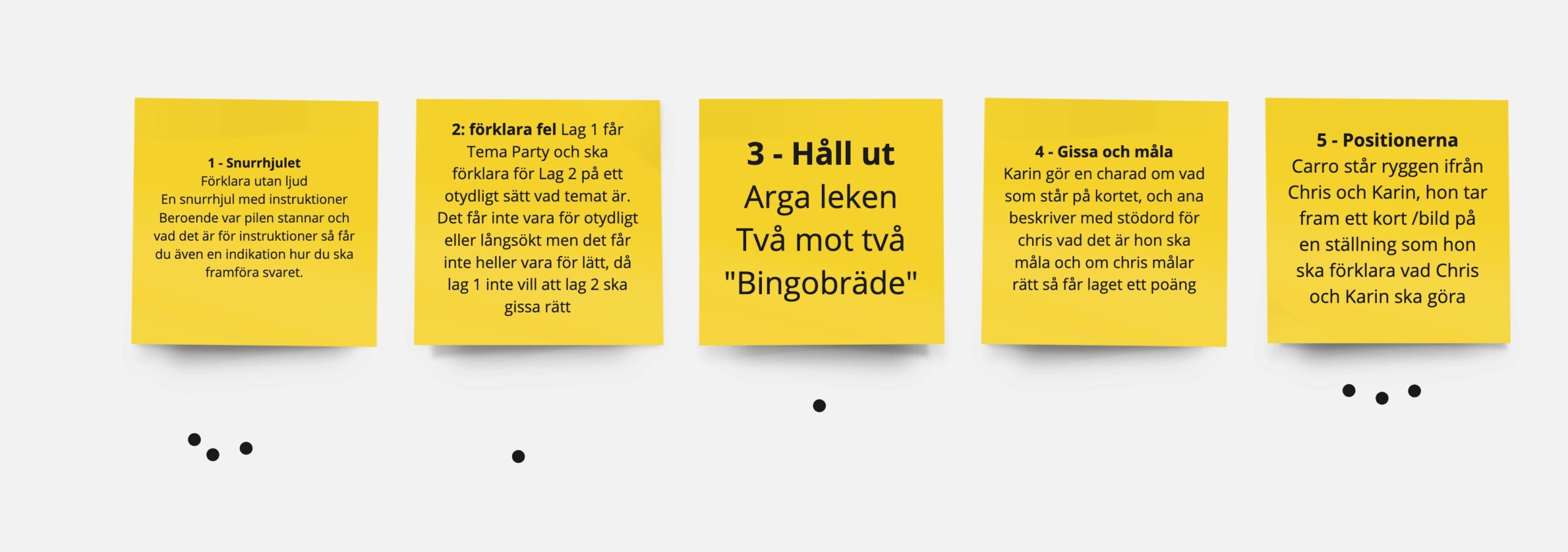
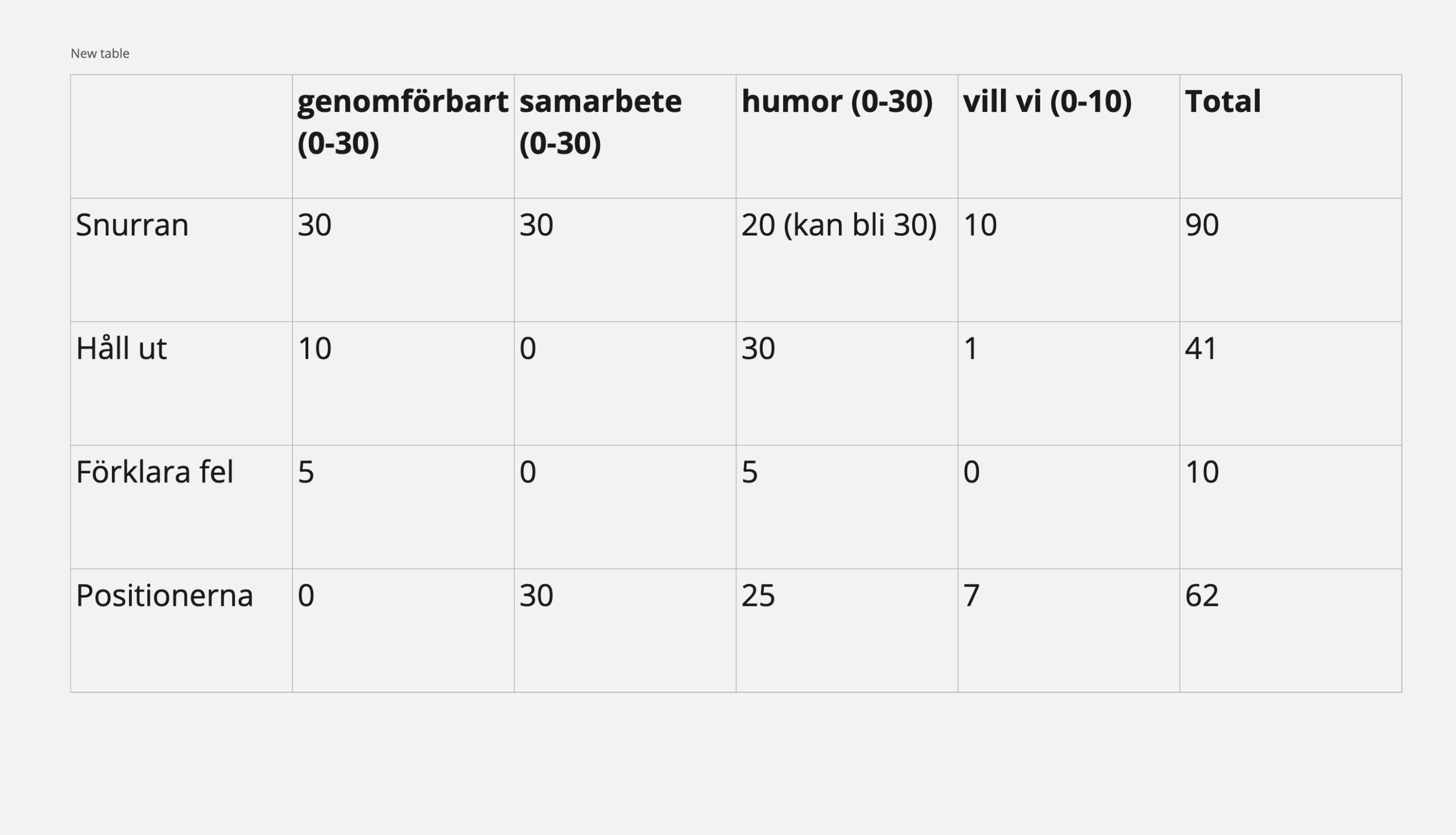
Weighted Matrix
After the dot voting, we have 4 game concepts, and we create a Weighted Matrix for them. This quickly provided us with an overview of which concept would work in practice, and everyone agreed in the end. It was a good and efficient method where everyone had a say, resulting in a positive outcome. The ’positionerna” game concept was the one we found most amusing, but it was evident that we didn’t consider it feasible. In the end, we chose the ’spinnhjulet’ game concept that we want to further develop
Develop
Low-Fi
The fundamental components we wanted to include were a board game with some kind of spinner and various activities to perform. We started brainstorming ideas for each segment, and it was important to maintain a common thread so that everything feels interconnected throughout the game. Here, we see how it gradually takes shape into a complete foundation.
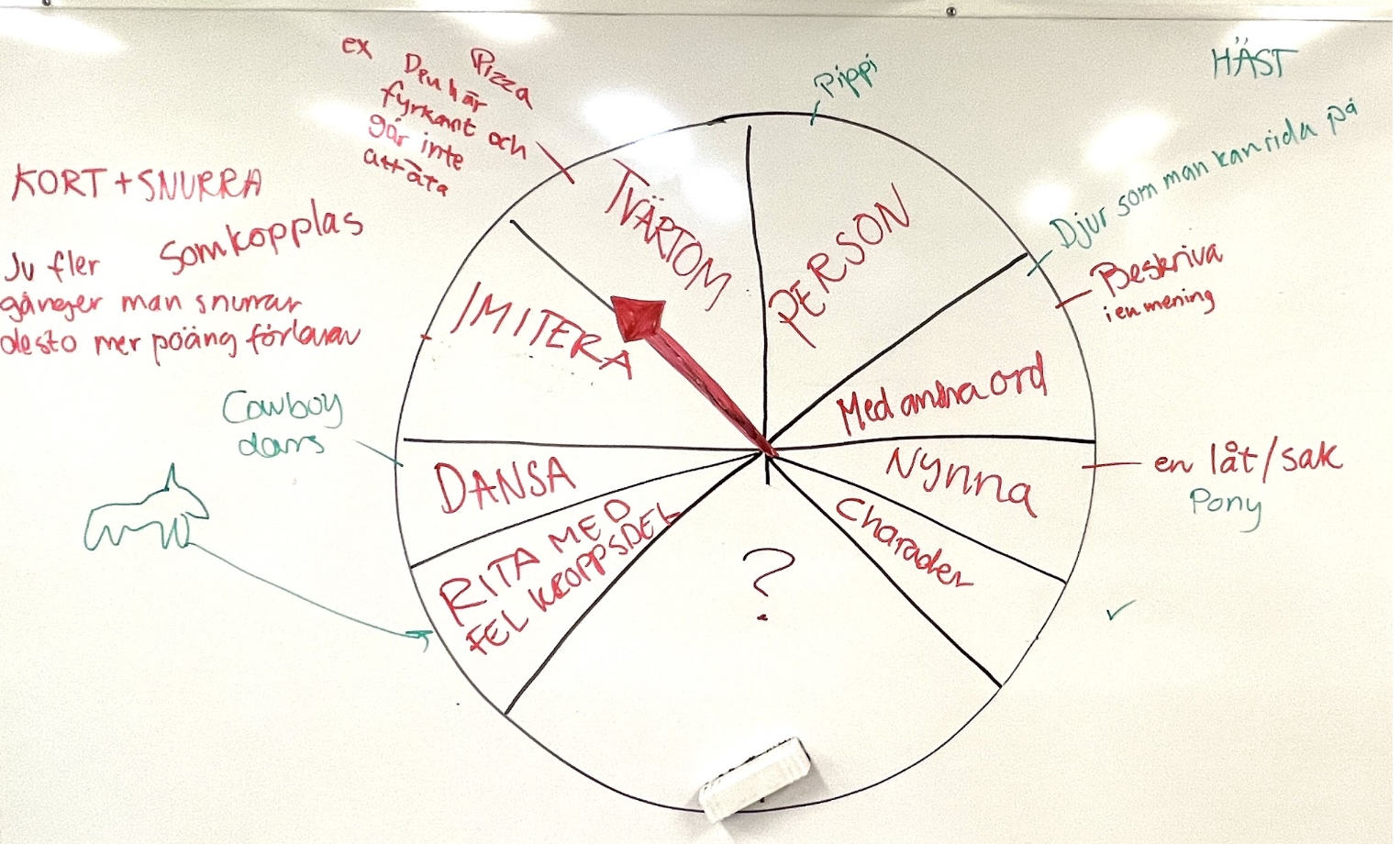

Deliver
Prototype
The next step was to playtest two different versions of the game: one with a single option on the cards and another with three options on the cards. We conclude that it is easier for the user when there are more choices and a bit more control if one wants to be tactical and play against the game. Therefore, we choose to use game cards with three different options instead of one
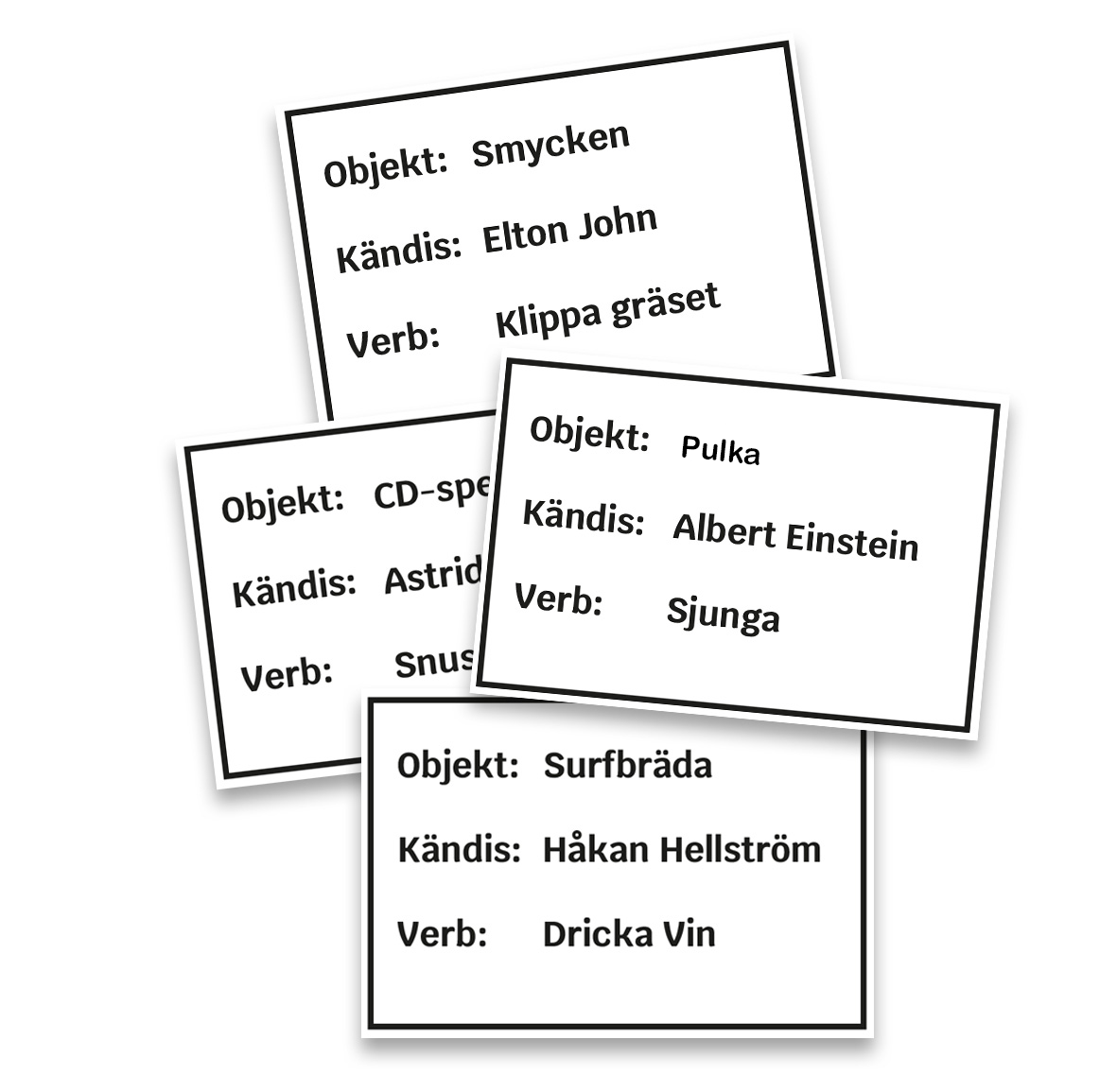

We also realize the importance of incorporating various obstacles so that the game becomes more dynamic, and players have to reveal more about themselves. Through playtesting, we also come up with clearer rules for each activity on the spinner and what works in practice. Reflection: We recognize that crafting rules to be user-friendly and easily understandable for a broad audience is a considerable challenge. It was a big effort to write in a way that is easy to understand.

Workshop
The game presentation was led by one test leader and three observers. There were 12 participants, divided into 4 groups, each with its own leader. We placed the rules on the table for participants to read while a test leader in each group explained them quickly. After explaining the rules, we took questions to maintain a better flow in the room. Participants were allowed to be independent, and test leaders sat on the side, observing and intervening if assistance was needed


Microsft reaction cards (MCR)
We provided the test participants with a clear questionnaire and gave each 65 Microsoft reaction cards containing our keyword ’humor.’ Participants were asked to choose 5 words each to highlight only the relevant ones.
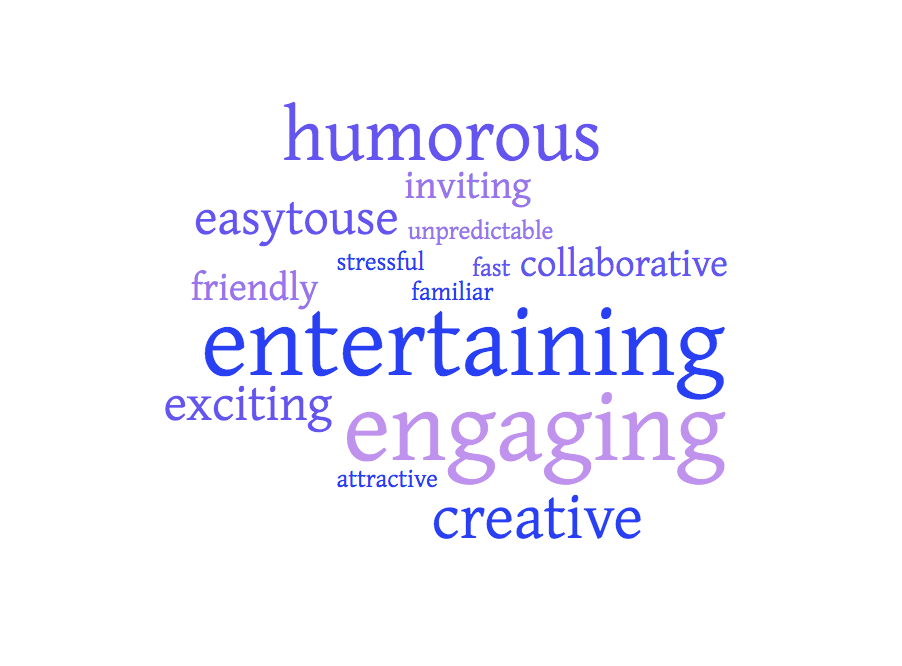
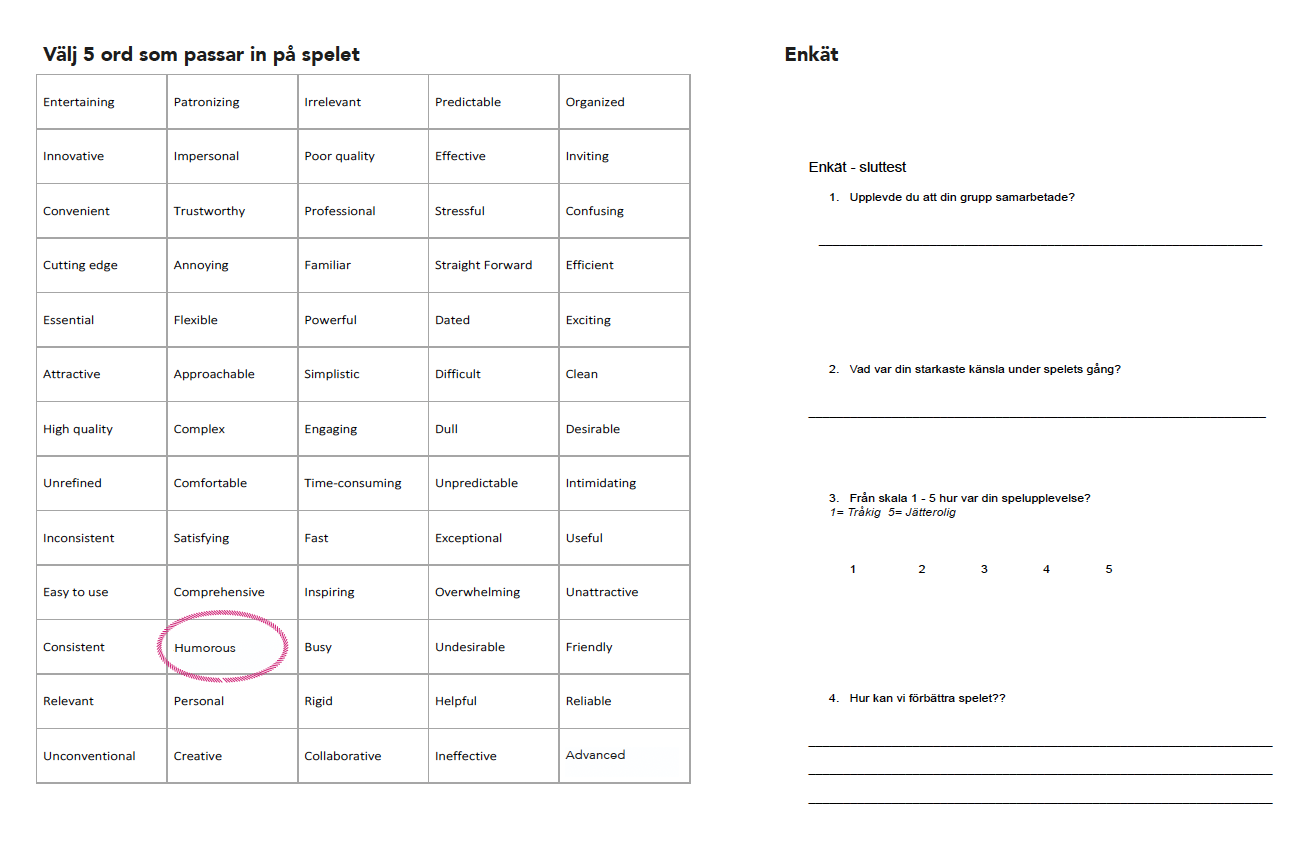
Result
In the first chart, 57.1% had no suggested improvements, while others wanted changes, like disliking the sound challenge or requesting a clearer scoring table and a better board. Despite improvements since the first test, we could have done more by asking follow-up questions.
In the second chart, 85.7% felt the group collaborated well during the game, while 14.3% found it partially effective, mainly relying on their own thoughts and seeking occasional help.
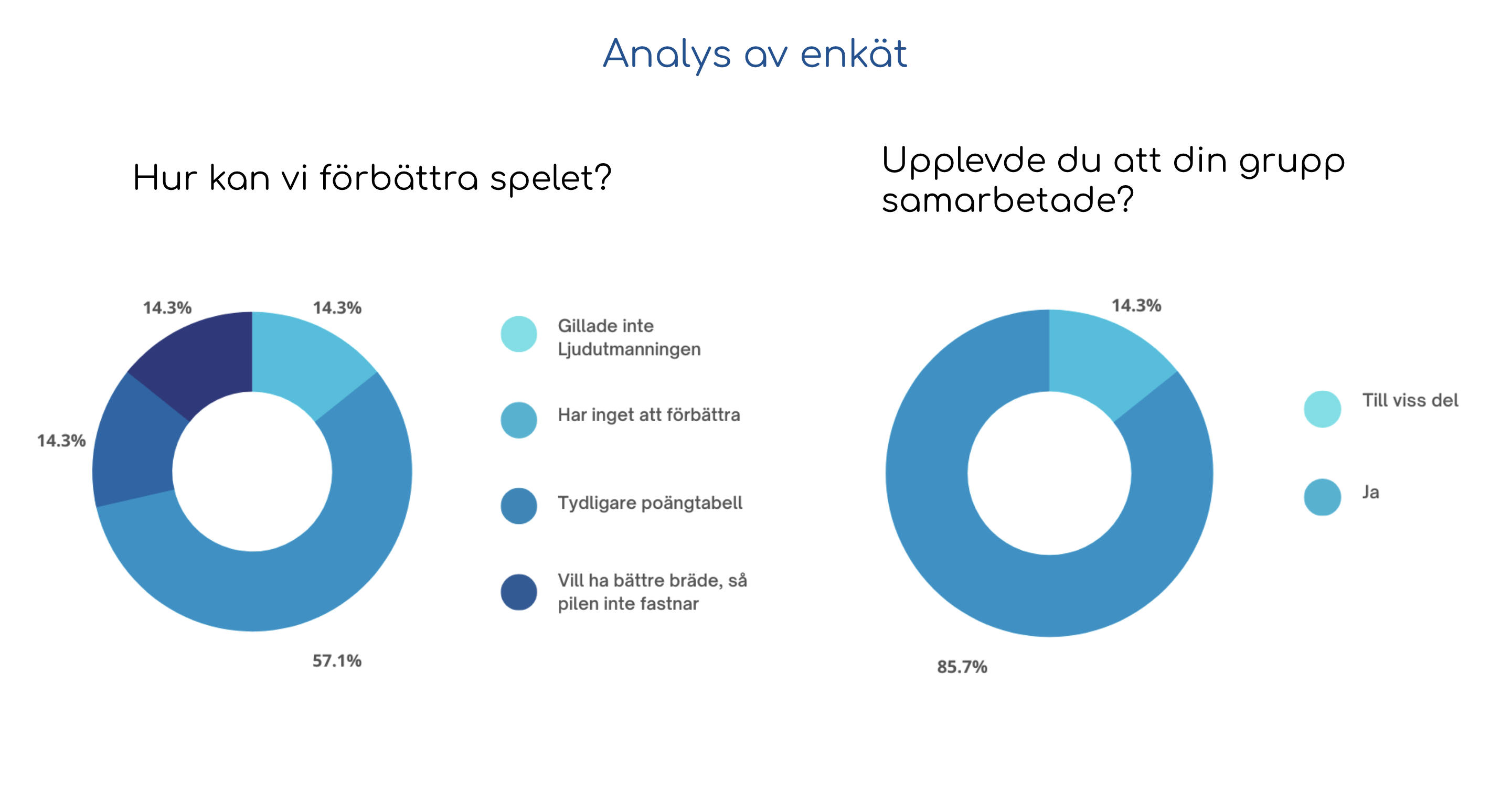
Reflection
If we had more time for more test with the new solutions, the game would probably have been more complete. Nevertheless, it was an incredibly fun project, and it was enjoyable to have tried various methods to achieve this result
